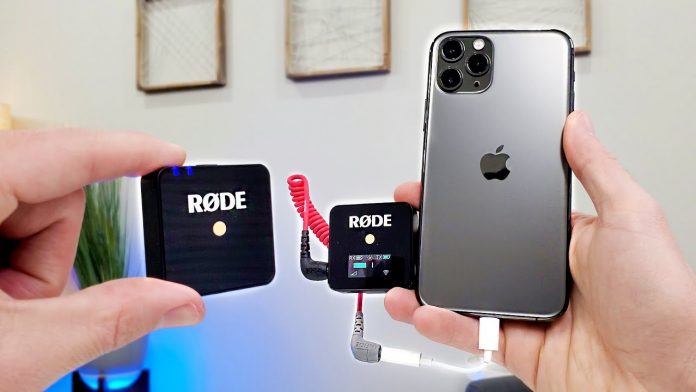How to Use a Wireless Microphone for iPhone
[ad_1]

If you’re looking for a wireless microphone to use with your iPhone, you’ve come to the right place! In this article, we will discuss the different types of wireless microphones that are available and how to use them with your iPhone. We’ll also provide some tips on choosing the best wireless mic for your needs. So whether you’re a musician, presenter, or just need to make a quick phone call in a noisy environment, we have the perfect wireless microphone for you!
What is a wireless microphone for iPhone and how does it work
A wireless microphone for iPhone is a device that allows you to make audio recordings without having to be near the iPhone. This can be useful if you want to record yourself or a group of people and the iPhone is not close by.
To use a wireless mic for iPhone, you first need to connect the microphone to the iPhone. Then, open the Camera app and select the microphone as your audio source. The sound quality of wireless recordings will not be as good as recordings made with an external mic that is connected directly to the phone, but it is a convenient option if you don’t have an external mic available.
Types of wireless microphones for iPhone
There are a few different types of wireless microphones that can be used with an iPhone. The most popular type is probably the Bluetooth microphone, which uses a Bluetooth connection to pair with your phone. There are also RF (radio frequency) microphones, which use a radio signal to connect to your phone, and infrared microphones, which use infrared light to connect.
Each type of microphone has its own advantages and disadvantages. Bluetooth microphones are typically very easy to set up and use, but they can sometimes have latency issues (meaning there is a delay between when you speak and when the sound is heard on the other end). RF microphones generally don’t have latency issues, but they can be more difficult to set up. And infrared microphones are usually the easiest to set up, but they can only be used in a line-of-sight setup (meaning the microphone and the receiver need to be in each other’s line of sight).
How to choose the best wireless microphone for your needs
When choosing the best wireless microphone for your needs, there are a few factors you need to consider.
The most important factor is what the microphone will be used for. If you’re looking for a mic to use in a church or other large venue, you’ll need one that can cover a large area. If you’re looking for a mic to use with your iPhone, you’ll want one that is small and easy to carry around.
Another factor to consider is the range of the microphone. Some microphones have a shorter range than others. If you need a mic that can reach across a large room, be sure to choose one with a longer range.
Benefits of using a wireless microphone for iPhone
There are a number of benefits to using a wireless microphone for an iPhone. One benefit is that it can help to improve the quality of your audio recordings. A wireless microphone can also be helpful if you need to record in situations where there is a lot of background noise, as it can help to isolate the sound from your specific subject. Additionally, wireless microphones tend to be more portable than traditional microphones, making them easier to travel with and use in different recording scenarios.
What are the best wireless microphones for iPhone on the market today and why should you consider purchasing one?
One option is the Shure MV88 Microphone. This microphone gives you high-quality recordings thanks to its built-in A/D converter which automatically adjusts settings like file type, bit depth, and sampling rate. It also has a directional capsule that helps to focus on the sound you want to capture, whether it’s your voice or an instrument.
Another option is the RODE NT-USB Mini Microphone. This microphone is ideal for those who want to record videos as well as audio since it comes with a mini tripod for stable placement. It also features a zero-latency monitoring function so you can hear yourself as you’re recording.
Image Source – https://www.youtube.com/watch?v=5vk652ESjjM
[ad_2]
Source link





